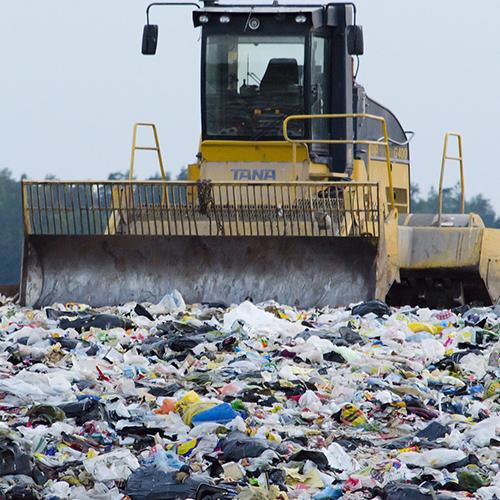
Traditionally, the materials required to manufacture products are mined, used and eventually disposed of in landfills. Today, these linear economic structures are undergoing a process of disruptive change. The focus is shifting to waste management digitalization in order to ensure that products and materials are used, recycled, recovered or converted into energy as part of a future-oriented circular economy.
Awareness of issues regarding sustainable living and consumption continues to grow. These issues are no longer minor concerns but have entered the mainstream and are now a pressing topic on a day-to-day basis. Along with personal responsibility, social awareness and legislation, the waste management industry itself is increasingly becoming a driving force when it comes to sustainable practices. More than ever, companies are expected to implement the principles of a sustainable circular economy through economically viable practices and future-oriented business models. What is needed are digital solutions that consider the demands of environmentally conscious consumers. In the past, some companies implemented "sustainable" practices mainly to come across as being green, but increasingly, sustainability and the circular economy are becoming firmly embedded in corporate strategies. In particular, there is enormous potential for digitalization with regards to the demand-driven waste disposal and the recycling of resources.
Artificial Intelligence and the Internet of Waste
Traditional waste management systems include rigid collection schedules with no room for flexibility, i.e. waste is collected at regular intervals, even if the containers are still empty. This applies to business and industry as well as private households. Collection systems usually operate according to fixed schedules. With the urgent need for climate change adaptation and sustainable solutions, waste management and recycling companies are faced with new challenges. To reduce CO2 emissions and avoid empty trips, there is a need for more efficient and flexible collection routes that adjust to the fill level of waste containers. The degree to which waste is separated at source is an additional challenge. Waste that is not separated or is sorted incorrectly results in high follow-up costs for the recycling industry and in the loss of valuable materials.
The use of digital tools such as artificial intelligence and sensor technology can significantly increase efficiency in waste management. Sensors in waste collection containers can allow fill levels to be accessed in real time, resulting in refuse trucks collecting waste according to demand. Visual sensors in waste collection vehicles can detect waste that was incorrectly disposed of and can prevent it from ending up in the compactor. This integrated approach with regards to smart waste management through smart digital solutions serves both to increase the efficient handling of recyclable materials and their repurposing as part of a circular economy. Furthermore it provides direct feedback on the separation of waste at source, thus creating opportunities for improvement and potential savings. The growing interest in understanding and supporting sustainable practices is factored into the digital network. Corporate clients and private households benefit from more transparency and direct feedback on the quality of waste disposal and are encouraged to become actively involved.
Conclusion
A successful digital transformation of the waste collection process results in the optimization of ecological, regulatory and economic processes. Digitalization in this sector leads not only to more efficient waste management but, thanks to fewer empty trips, lower sorting costs and improved recycling of materials, also to cost savings.
Keywords
More similar blogposts:
Found what you were looking for?
Start your intelligent search now


